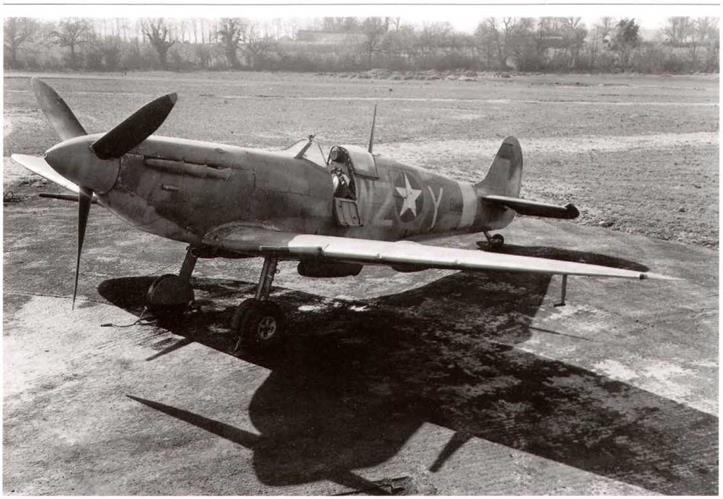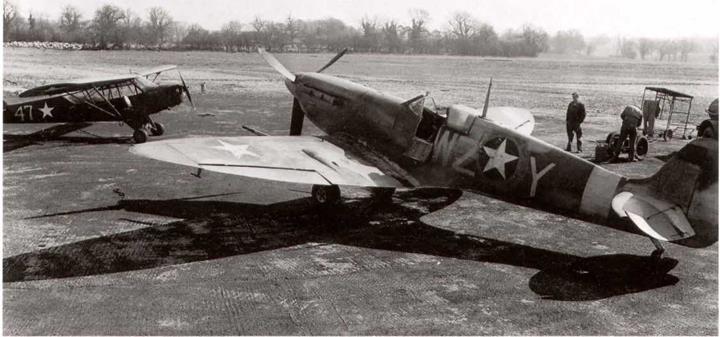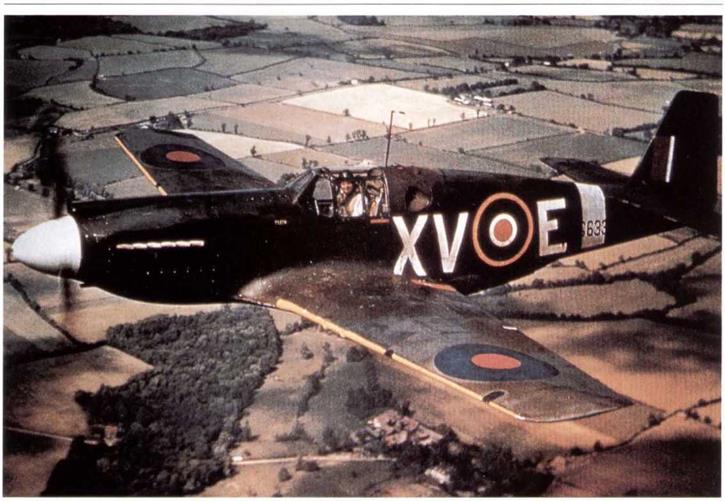Eglin Field report on tests run to reduce the drag and weight of camouflage, March 16, 1943
On March 16, 1943, Ihe Dir. of War Org. and Movement (Wash.) reviewed a report from Eglin Field covering tests which had been conducted to try to reduce the surface drag caused by the basic camouflage, and also to reduce the weight of the finish without impairing its camouflage effectiveness. Eglin Field believed that the weight could be reduced by 20 pounds without hurting the camouflage (type of aircraft not stated-author).
They stated that Mat. Center (WF) should investigate the possibility of producing a non-specular clear varnish with that property inherent in the coating, so that pumicing would not be necessary (i. e. that no rubbing down of the clear varnish to make it a flat finish would be necessary after it had dried-author).
|
Boeing B-17F-80-BO. 42-30018 of the 534th BS, 381st BG, 1st Combat Bomb Wing, form up as they leave their base at Ridgewell to attack Europe in mid 1943. This was just prior to the adoption of the triangle, circle, and square unit markings on aircraft of the Eighth Air Force. (USAF) |
|
|
Supermarine Spitfire Mk. VC, BM635. originally of the 309th FS, 31st FG, before that groups’ personnel were moved to North Africa. Their Spitfires were retained in England and used by the 67th Rec. G, at Mcmbury, England. This is one of the reverse lease-lend aircraft supplied to theAAF. It is in standard RAF camouflage of dark green and ocean gray over medium sea gray, with sky spinner and band around the fuselage. It has the yellow outlined cocarde on the fuselage. (USAF)
|
|
Another view of the same Spitfire shows the single wing cocarde replacing the normal RAF roundels on both wings. In the background is a Piper L-4 of the 67th Rec. G, without the yellow outline on the fuselage cocarde. (USAF)
|
North Aim1 rican Mustang Mk 1, AG633, aircraft XV-E of RAFSq. 2, shows the RAF Dark Green and Ocean Gray finish, with Sky spinner and □ft fuselage hand. (USAF) |
Dir. of Mil. Reqmts. surveys active operating theater commanders on their needs for camouflage, March 24,194.1.
The Dir. of Mi.1. Req. (Wash.) asked for a survey of the active operating theaters to get their recommendations as to the types of camouflage on which emphasis should be laid so that Material Command could expend its efforts on the most profitable areas. Specifically, the comments of the Service were especially desired as to whether camouflage should be provided for:
a. Concealment of parked aircraft?
b. Confusion of attacking aircraft in order to induce inaccurate fire?
c. Night operations?
d. Concealment against observation from above or beneath the aircraft in flight?
e. Low altitude operations as opposed to high altitudes?
f. Concealment from observation by sea or ground forces when operating against vessels or troops?
g. Other tactical needs?
Comments were also requested as to whether the tactical advantages of camouflage had been minimized by the enemy’s use of radio sounding equipment (later known as radar – author.)














